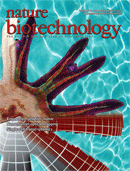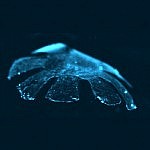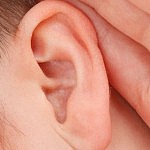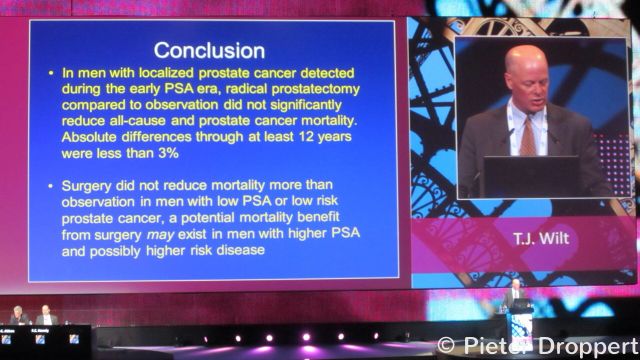Can you imagine what it must be like to go blind? Degenerative diseases of the eye such as age-related macular degeneration (AMD) and retinitis pigmentosa (RP) can result in loss of vision and blindness.
Retinitis pigmentosa is an inherited genetic condition for which there is no cure. It results in the progressive loss of function of the retinal photoreceptors that convert light into electrical nerve impulses that travel down the optic nerve to the brain for processing into the images we see. As you reduce the ability to process light, so you start to lose your sight and can end up totally blind.
Several companies and research groups are now working on an artificial retinal prosthesis. The term “bionic eye” is often used to describe this research, which for many may conjure up the “$6 million dollar man“. This “hype” is, however, far from the reality of where the technology currently is at.
To date, only crude images can be detected. There is no dramatic restoration of sight or vision, instead the retinal prostheses currently only offer the ability to detect light and large shapes.
However, for those who are blind, being able to detect shapes and “see” a door, could help people enormously in their activities of daily living. In the same way that we have seen tremendous increase in the megapixels for digital cameras, so it is hoped that visual acuity will improve as the technology increases the number of pixels that can be processed.
There are several research groups and companies working on different types of electrodes and different implant locations in the retina, but in essence they have a common approach.
Most of the retinal prostheses in development use an external video camera to convert light to electrical signals that are transmitted wirelessly to a retinal implant (multielectrode array) that delivers a pattern of electrical signals to the retina. This electrical stimulation of the retinal cells results in signals being passed down the optic nerve to the brain where they are processed into visual images.
The Argus II Retinal Prosthesis System (Second Sight) is the most advanced in terms of commercial approval. It has obtained CE marking and is on the market in Europe where it sells for a price of $115,000 (Source: ExtremeTech).
On September 28, 2012, the FDA ophthalmics device panel will discuss the application by Second Sight to sell the Argus II system in the United States as a humanitarian use device.
The Argus II implant consists of a coil (for receiving and transmitting wireless data) fixed on the sclera (outside of eye) and a 60 electrode array positioned on the surface of the retina.
Argus II Clinical Trial Results
The results of a multicenter trial with 30 patients at 10 centers were published earlier this year in Ophthalmology, a journal of the American Academy of Ophthalmology (AAO). Mark S. Humayun from the Doheny Eye Institute at University of Southern California and research colleagues reported that:
“Subjects performed statistically better with the system on versus off in the following tasks: object localization (96% of subjects), motion discrimination (57%), and discrimination of oriented gratings (23%). The best recorded visual acuity to date is 20/1260.”
In addition to finding the device to be reliable over the long-term, Humayun et al concluded that:
“The data in this report suggest that, on average, prosthesis subjects have improved visual acuity from light perception to at least hand movements, with some improving to at least counting fingers.”
“These visual acuity data and other performance results to date…demonstrate the ability of this retinal implant to provide meaningful visual perception and usefulness to subjects blind as a result of end-stage outer retinal degenerations.”
Bionic Vision Australia announces first implant of Bionic Eye
Last month, Bionic Vision Australia, announced in an August 30, 2012 media release that they had “successfully performed the first implantation of an early prototype bionic eye with 24 electrodes.”
The recipient, Dianne Ashworth is quoted as saying:
“I didn’t know what to expect, but all of a sudden, I could see a little flash…it was amazing. Every time there was stimulation there was a different shape that appeared in front of my eye,”
Veronika Gouskova, Marketing and Communications Manager of Bionic Vision Australia (BVA) kindly responded by email to my questions about their news:
BSB: I saw in your Aug 30 media release that the implant was described as a “world first” by Dr Allen. Could you clarify in what way this is a “world first” when there are other retinal prosthetics on the market e.g. Argus II from Second Sight?
BVA: This is a world first implantation of a device in the suprachoroidal space at the back of the eye. Although there have been other groups working with patients around the world, this surgical position and procedure is unique to Bionic Vision Australia
BSB: How does the Australian Bionic Eye differ from the Second Sight product that is marketed in Europe?
BVA: There are a number of groups internationally working in the field of retinal implants – the fact that this research is ongoing means that the problem hasn’t yet been solved completely. Between all these groups there are a differences in technology being developed, materials used, surgical placement of the device, surgical technique and the way the electrodes or photodiodes are being stimulated (i.e. how the visual data is processed before it is sent to the implant).
At the end of the day, it’s all about ensuring the best outcome for patients. We are developing two prototypes, with different functional aims: the ‘wide-view’ device combines novel technologies with materials that have been successfully used in other clinical implants. This approach incorporates a microchip with 98 stimulating electrodes and aims to provide increased mobility for patients to help them move safely in their environment.
Our ‘high-acuity’ device incorporates a number of exciting and new technologies, such as diamond materials, to bring together a microchip and an implant with 1024 electrodes. The device aims to provide functional central vision to assist with tasks such as face recognition and reading large print. The early prototype that we implanted with our first three patients is a stepping stone towards further development for these two devices.
Bionic Vision Australia brings together researchers from many different fields, so we have a truly multidisciplinary team. This means the clinicians and surgeons are involved in the design and development process from the start. Further, a lot of our researchers were involved in the cochlear implant, or bionic ear development – they know what it takes to bring a competitive medical implant to the market.
BSB: I saw that your device was placed between the choroid and sclera, is that significant as opposed to being on the top of the retina? Could you provide further clarification on the significance of this and the surgical technique required for implantation?
BVA: Yes, this early prototype is implanted in the suprachoroidal space, between the choroid and the sclera. This is beneath the retina. There are a number of advantages in doing this, e.g. this position greatly enhances the mechanical stability of the implant and allows for a relatively straightforward surgery. The surgical procedure involves making an incision through the sclera and sliding the implant in place.
BSB: What are the next steps, is a larger clinical trial of your device already planned/underway – when will other patients receive implants?
BVA: We have implanted this early prototype in three patients and will continue to work with these patients over the next 18 months while we further develop our full prototype devices. The next step will be of course, a larger trial with our full devices in due course.
BSB: How might your device be potentially sold/commercialized or made available – is there a commercial partner associated with Bionic Vision Australia?
BVA: Bionic Vision Australia is an unincorporated joint venture between a number of research organisations in Australia. We are funded by the Australian Research Council. A commercialisation vehicle has been set up, Bionic Vision Technologies, to commercialise the technology. This company is solely owned by the member organisations that are involved in our research.
In addition to Second Sight and Bionic Vision Australia, there are several other companies and research groups with retinal prostheses in development.
It is an area where we are seeing innovation in action as teams of multi-disciplinary researchers strive to restore sight and improve the quality of life to people who have become blind.
However, given the high cost of R&D, and the fact that much of the research is government funded, I’m not sure of the commercial opportunity. It will be interesting to see how the market for retinal prostheses develops.
Challenges that have to be overcome
A number of challenges with retinal prostheses will have to be overcome. Some of these are discussed in a 2011 editorial by James Weiland, Alice Cho and Mark Humayun on “Retinal prostheses: Current Clinical Results and Future Needs” that was published in the AAO journal, “Ophthalmology.” I encourage anyone with an interest in this area to read this insightful review.
Some of the questions I took from this editorial were:
- Why do some patients respond better than others with an implant?
- Will retinal remodeling and ongoing degeneration limit the usefulness of implants?
- What is the best surgical way to ensure optimal placement of the stimulating arrays to maximize visual acuity but avoid problems associated with fixation, and wound closure?
- Could artificial vision be detrimental to other sensory inputs e.g. the ability of the visual cortex to process data from non-visual Braille reading?
Answers to these and other questions will come as clinical experience is gained and advances in technology improve the design and functionality. In my view this is innovation in action.
Update February 15, 2013 Argus II receives FDA approval
As expected following the positive endorsement of the Ophthalmic Devices Advisory Panel last year, the United States Food and Drug Administration (FDA) announced in a Feb 14, 2013 press release that Second Sight’s Argus II retinal prosthesis system had received approval as a humanitarian use device for the treatment of adults with advanced retinitis pigmentosa.
References
 Humayun MS, Dorn JD, da Cruz L, Dagnelie G, Sahel JA, Stanga PE, Cideciyan AV, Duncan JL, Eliott D, Filley E, Ho AC, Santos A, Safran AB, Arditi A, Del Priore LV, Greenberg RJ, & Argus II Study Group (2012). Interim results from the international trial of Second Sight’s visual prosthesis. Ophthalmology, 119 (4), 779-88 PMID: 22244176
Humayun MS, Dorn JD, da Cruz L, Dagnelie G, Sahel JA, Stanga PE, Cideciyan AV, Duncan JL, Eliott D, Filley E, Ho AC, Santos A, Safran AB, Arditi A, Del Priore LV, Greenberg RJ, & Argus II Study Group (2012). Interim results from the international trial of Second Sight’s visual prosthesis. Ophthalmology, 119 (4), 779-88 PMID: 22244176
Weiland JD, Cho AK, & Humayun MS (2011). Retinal prostheses: current clinical results and future needs. Ophthalmology, 118 (11), 2227-37 PMID: 22047893
 Regular blog readers will know I think tissue engineering is an exciting area where you can see innovation in action – advances in basic science can translate into ways to artificially create replacement organs and body parts.
Regular blog readers will know I think tissue engineering is an exciting area where you can see innovation in action – advances in basic science can translate into ways to artificially create replacement organs and body parts.
 Imagine that you are born deaf and live in a world of silence – what price would you pay for a new treatment that might restore your hearing?
Imagine that you are born deaf and live in a world of silence – what price would you pay for a new treatment that might restore your hearing?